
retaining wall cad details Google Search construction Pinterest
Concrete Retaining Wall Detail: The Basics. Before we delve into the intricate details, let's start with the fundamental aspects of a concrete retaining wall. A concrete retaining wall is a structure designed to hold back soil and prevent erosion on sloped terrains. It provides lateral support to keep the soil in place and create level areas.

Building a Stone Retaining Wall JLC Online
For larger retaining walls up to three feet high, these 6″ x 16″ x 10.5″ concrete garden wall blocks are the best for DIY projects. They are widely available, easy to work with, and relatively inexpensive.. Here is another good article on how to do this if you need more detail. Planning and designing a retaining wall.
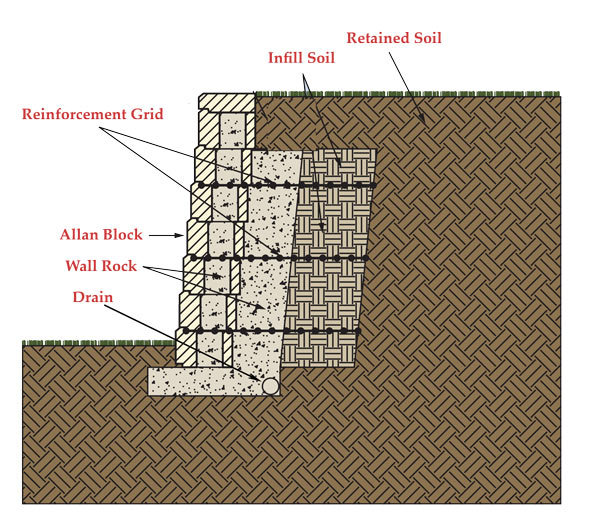
The Allan Block Blog The Anatomy of a Retaining Wall
1 Things to Consider Before Building a Retaining Wall Here are some things to know before you start buying material and building a retaining wall: Depending on the wall's height and your location, you may need a building permit to install a retaining wall.

Retaining wall design and its types used on construction
Install patios, steps and other hardscape elements. CONCRETE RETAINING WALL PROPORTIONS Proper proportioning of a retaining wall is just as important to its construction as its structural design. Construction-friendly proportions facilitate proper concrete placement and provide sufficient room for structural reinforcement.
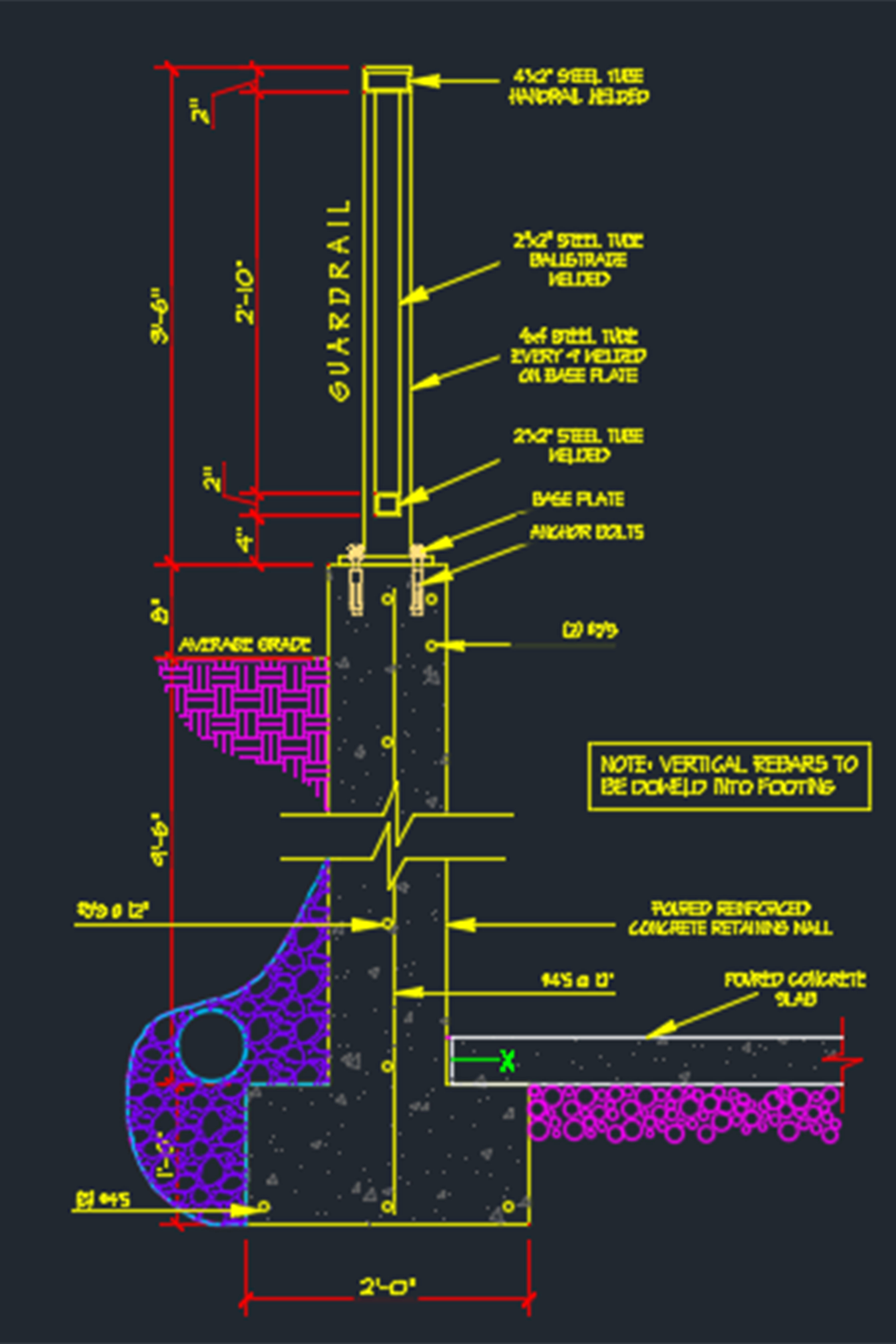
Retaining wall and handrail details CAD Files, DWG files, Plans and
Design Details Typical Design Details for Retaining Walls and Fences Allan Block has a library of design details - cross section drawings to assist the design community in efficiently creating professional documents for our retaining walls and fence system.

Concrete Retaining Wall Reds Landscaping and Design
Retaining Wall Detail. Retaining walls are relatively rigid walls used for supporting soil laterally so that it can be retained at different levels on the two sides. Retaining walls are structures designed to restrain soil to a slope that it would not naturally keep to (typically a steep, near-vertical or vertical slope).
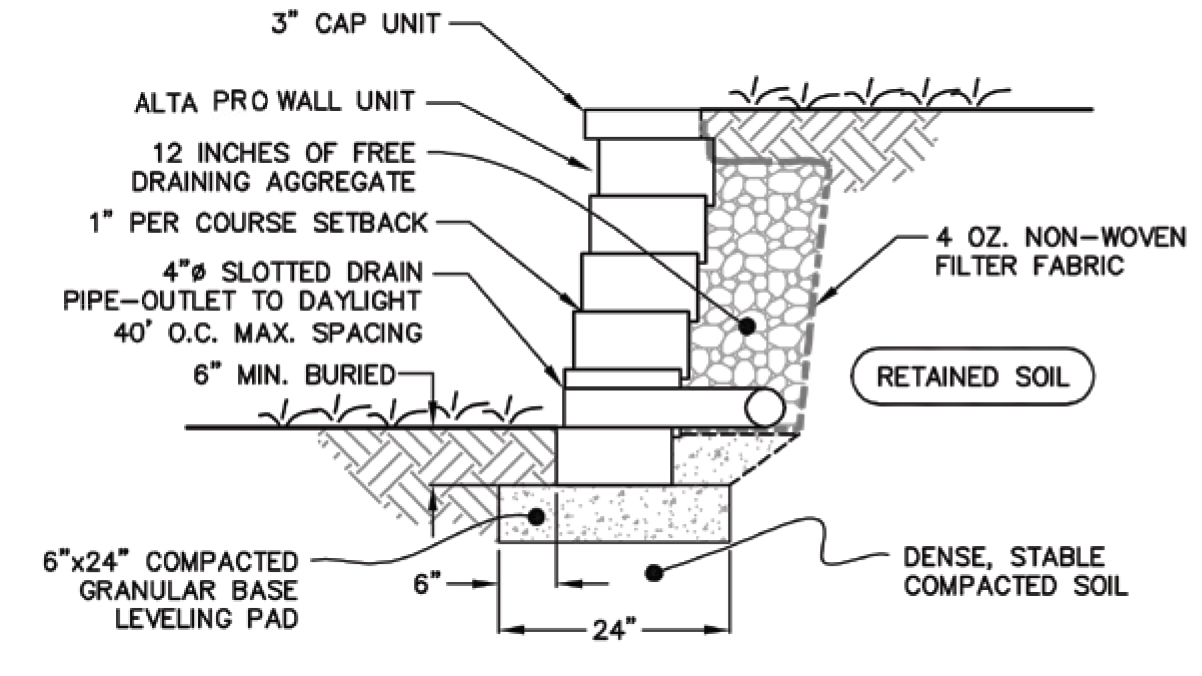
Retaining Walls Rockland NY Retaining Wall Design Rockland County NY
Retaining wall construction details are critical to understanding the design and constructability of common retaining wall scenarios. These downloadable construction details are perfect to add to your plan set. Below, the construction details will answer questions like: Can I put a fence at the top of a retaining wall?

01.030.0322 Base of Wall Detail Brick Ledge, T/FDTN. Below Grade
and Construction Details for Concrete Masonry Page A-3 Preface PREFACE Overview of the Publication Concrete masonry products are used in virtually all aspects of building construction, including foundations, loadbearing walls, infill walls, interior partitions, as well as exterior landscaping applications such as retaining walls and paving. This
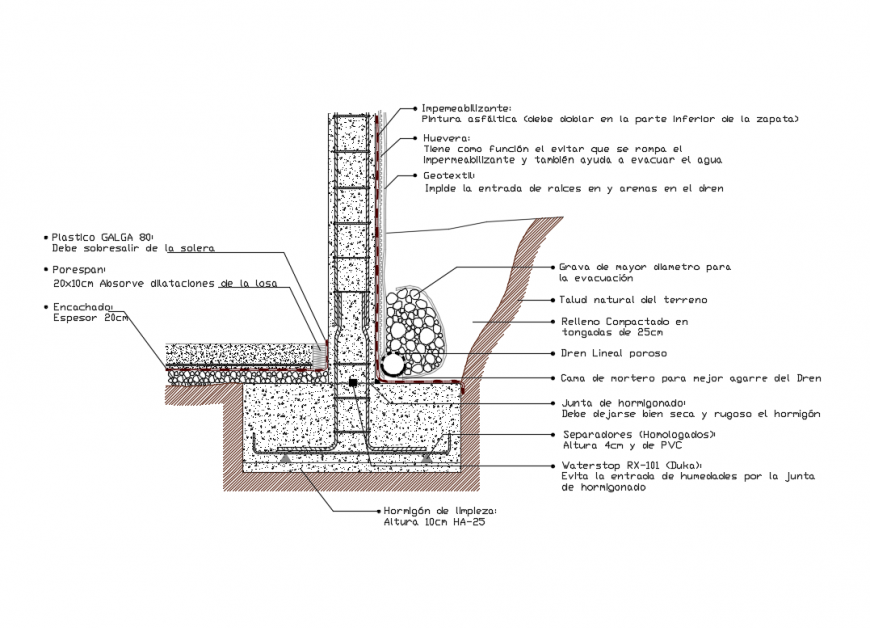
Structure details of retaining wall construction cad drawing details
Any structure that is used to retain the earth is generally called a retaining wall. There are other types of retaining structures that retain materials like rock, sand, etc. The design of retaining structures is not same for the all types of structures. It depends on the structural behavior and forces acting on a retaining wall.
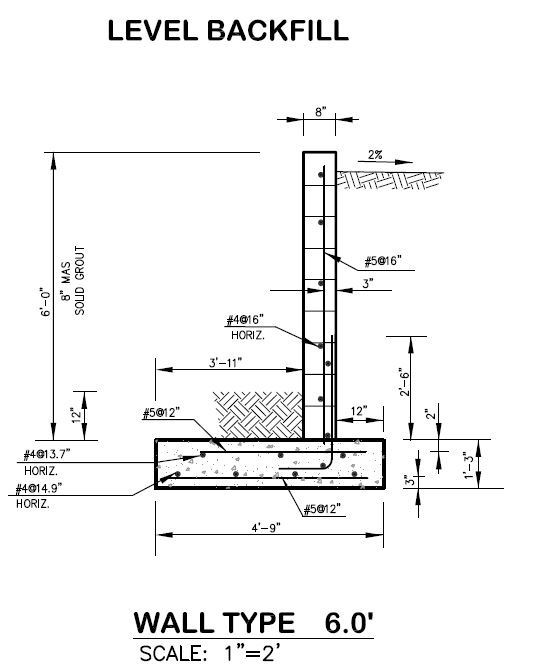
Retaining Wall Design Foundation Engineering Consultants, Inc.
Fill with Mortar. When you reach the finished height of the concrete-block retaining wall, fill those cores containing rebar to the top with mortar. Mix the fill mortar slightly wetter than what you'd use for joints. Smooth the top with a trowel. Spread additional mortar, and lay cap block to finish the wall. Add style and support to your yard.
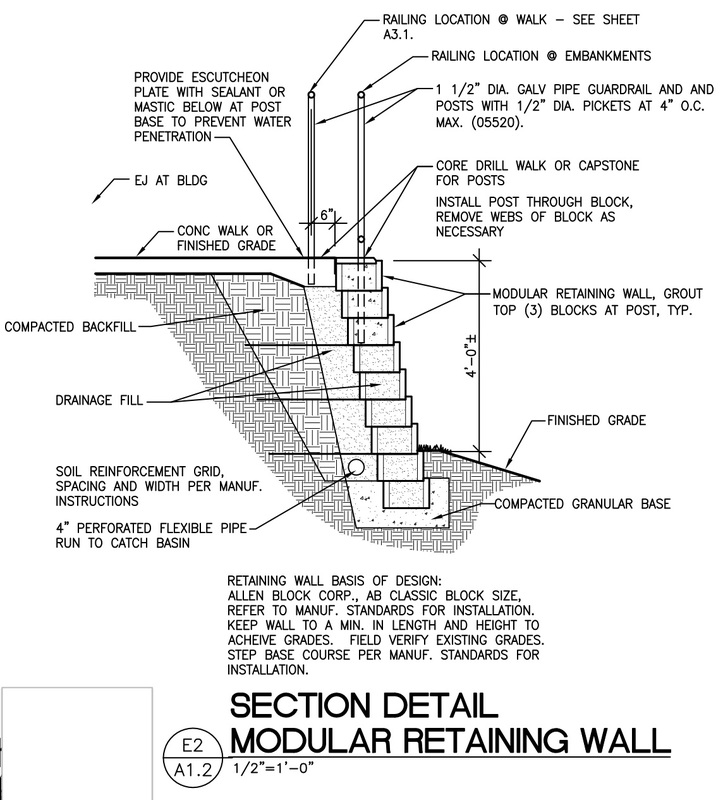
Retaining Wall Architekwiki
Retaining walls should be designed to safely resist overturning and sliding due to the forces imposed by the retained backfill. The factors of safety against overturning and sliding should be no less than 1.5 (ref. 7).. These design methods are discussed in detail in Allowable Stress Design of Concrete Masonry, TEK 14-7A, and Strength Design.
:max_bytes(150000):strip_icc()/building-stone-retaining-walls-2131135_final_AC-5be07d6cc9e77c0051e1a64d.png)
How to Build a Stone Retaining Wall
1. About Retaining Walls; Terminology 2. Design Procedure Overview 3. Soil Mechanics Simplified 4. Building Codes and Retaining Walls 5. Forces on Retaining Walls 6. Earthquake (Seismic) Design 7. Soil Bearing and Stability 8. Designing the Cantilever Wall Stem 9. Footing Design 10. Pier and Pile Foundations 11. Counterfort Retaining Walls 12.

Retaining Wall Construction Plan
Retaining wall is a structure that are designed and constructed to withstand lateral pressure of soil or hold back soil materials. The lateral pressure could be also due to earth filling, liquid pressure, sand, and other granular materials behind the retaining wall structure.
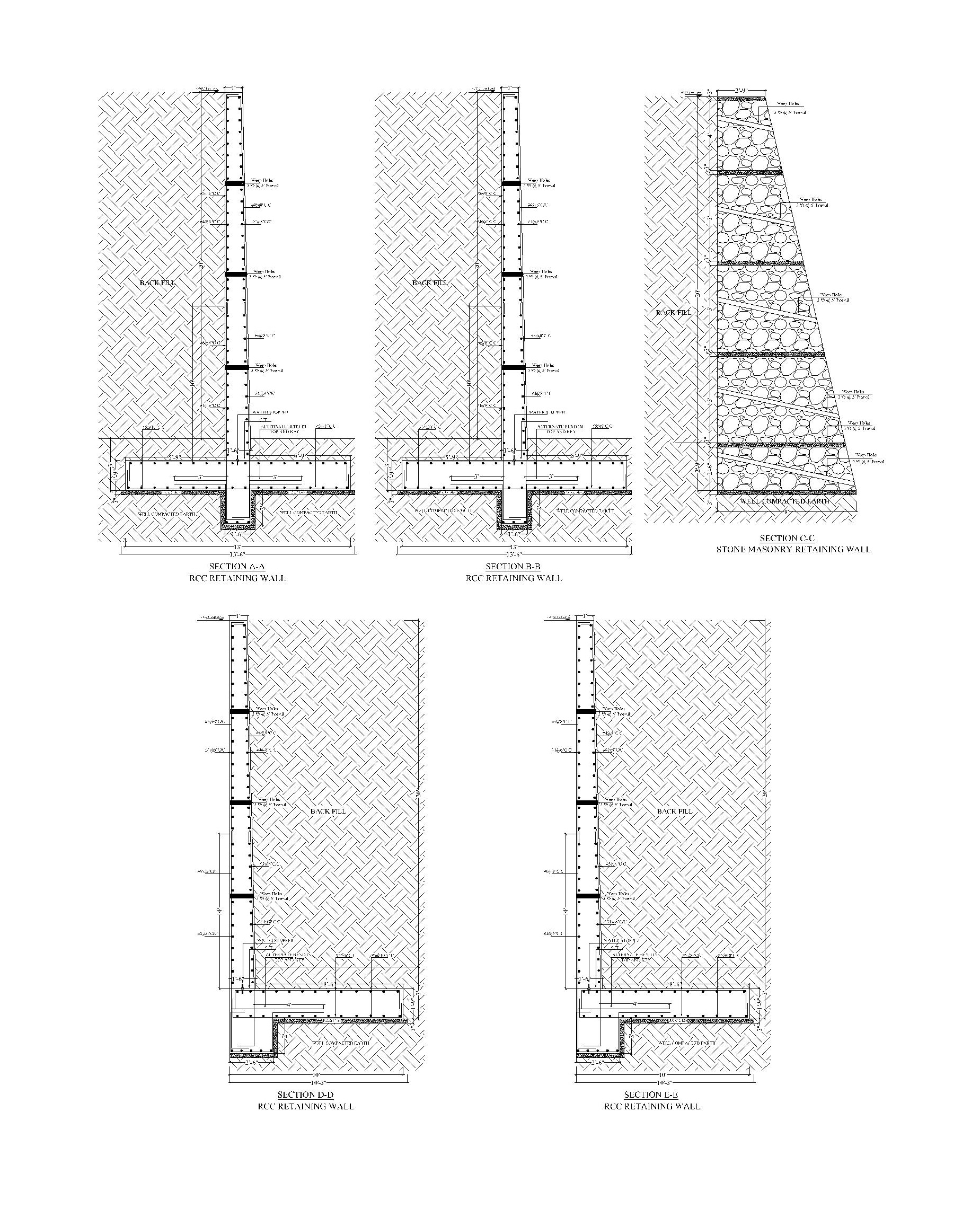
RCC Retaining Wall Complete Detail CAD Files, DWG files, Plans and
Retaining Wall Details Segmental Retaining Wall Design Details The following is a listing of the Allan Block Typical Details that are available. Click on the drawing to view or print a larger image. Each file also is available for download in AutoCAD (.dwg or .dxf), or Adobe Acrobat (.pdf) file format.
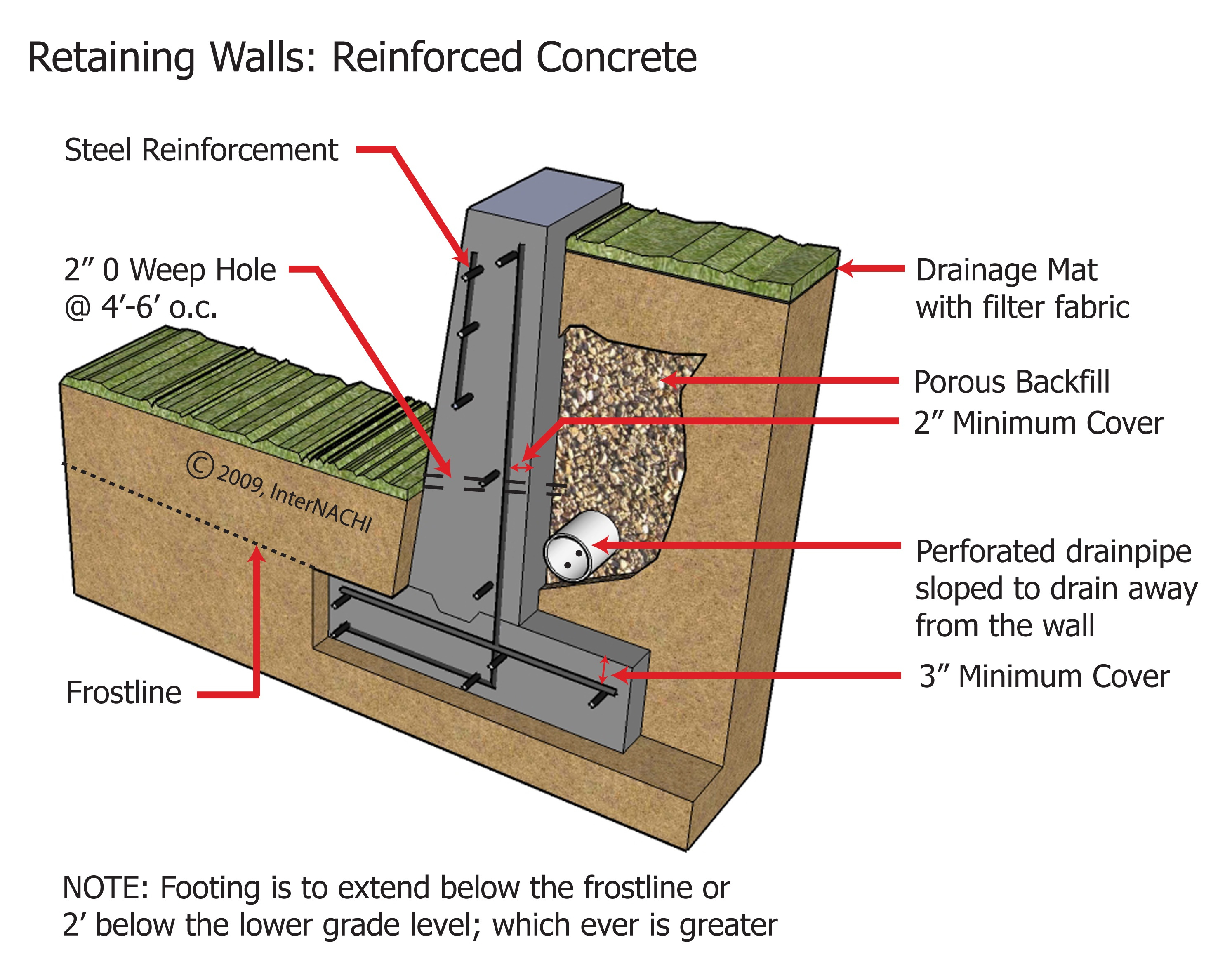
Concrete Retaining Wall Inspection Gallery InterNACHI®
Modular Retaining Wall Systems There are three types of modular units used for retaining wall systems. Segmental retaining wall (SRW) units typically have a smaller face area (1 square foot or less) with a unit depth of less than 24inches (most are 12 inchesin depth), and are generally hand installed and dry-cast by ASTM definition.

the diagram shows how to install a concrete retaining wall with
Retaining walls have a wide variety of uses around the yard, all of which involve keeping earth from spilling off a steep slope. They're indispensable in the creation of sunken patios, walkout.